Art World
These Are The 12 Biggest Controversies That Rocked the Art World in 2018
From resistance to the Met's new admission policy to outrage over museum funding, these were the biggest debates of 2018.
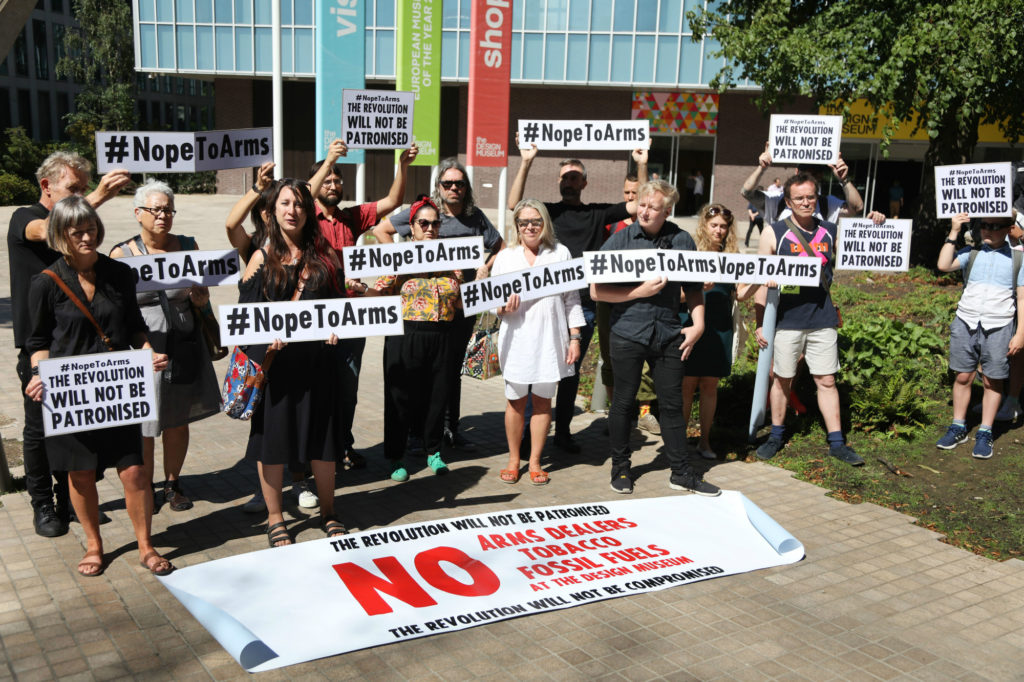
From resistance to the Met's new admission policy to outrage over museum funding, these were the biggest debates of 2018.

This was another year of controversy, both in the real world and the art world. The most heated debates ranged from sticker shock over the Met’s decision to implement a mandatory admission fee for out-of-towners to outrage over the Brooklyn Museum’s hiring of a white curator of African art. Below, we recap some of the major headlines that roiled the art world over the past 12 months. (2018 was a long one—can you believe that whole Guggenheim golden toilet thing was this year?)
Stay tuned: Many of these arguments are likely to carry over well into 2019.
Few might have predicted the deep-seated rage that greeted the Metropolitan Museum of Art when it announced in January that it would implement a mandatory $25 admission charge for out-of-state visitors. (New Yorkers continue to pay what they wish.) Social media erupted with disdain. The New York Times’s art critic Roberta Smith called the move “classist and nativist.” The move even united monster scholars, feminist medievalists, and a professional association of art historians, artists, and art critics, who came together in an open letter to decry the new policy. Throughout the uproar, the Met’s president and CEO Dan Weiss maintained that the move was essential for the Met’s financial health and that it simply put the museum’s admission policy in line with its peers.
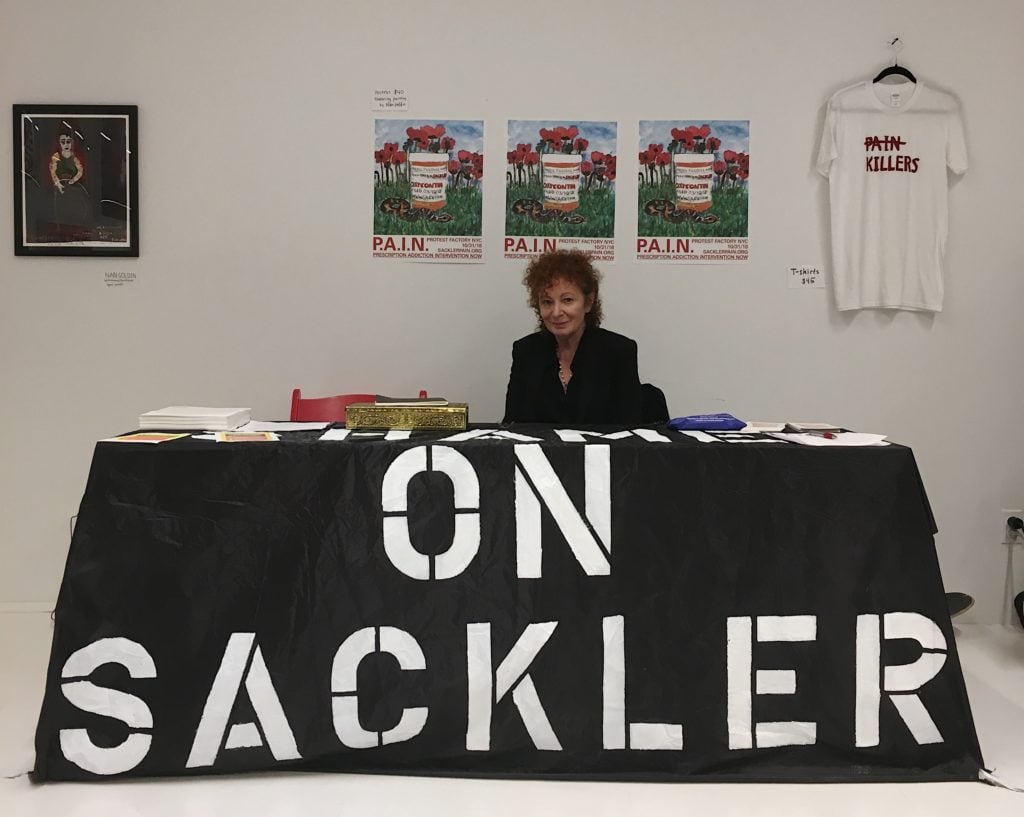
Nan Goldin at the P.A.I.N. table, at the Protest Factory, Downtown for Democracy, at Deitch Projects, 2018. Photo: Stan Narten.
Museums dependent on philanthropy from the Sackler family were feeling the pain in January, when photographer Nan Goldin began to step up her anti-opioid advocacy campaign. Throughout the year, activist-artist and former OxyContin addict led “die-in” demonstrations at the Met, Harvard Art Museums, and the Smithsonian’s Freer-Sackler. UK museums that have benefited from the Sacklers’ largess—including the Victoria & Albert Museum in London, which has a new Sackler-funded courtyard—watched the drama unfold from across the pond. Now, trustees at the National Portrait Gallery are weighing the reputational risks of accepting a big but controversial donation from the family. (Jillian Sackler, the wife of the late Arthur Sackler, has maintained that their donations were not funded by the production, distribution or sale of OxyContin.) The ongoing dispute over Sackler funding is part of a larger debate tearing through the museum world: Under what circumstances should a museum reject funding from a potential sponsor? More on that later.

America, a fully functioning gold toilet by Italian artist Maurizio Cattelan, at the Guggenheim Museum in New York on September 15, 2016. Photo by William Edwards/AFP/Getty Images.
Toward the end of January, news broke that the Guggenheim’s artistic director and chief curator, Nancy Spector, had made a very daring offer to the White House. When Donald Trump’s administration asked to borrow a Van Gogh canvas from the Guggenheim, Spector—an outspoken critic of the president—declined. But she emailed Donna Hayashi Smith of the White House’s Office of the Curator with an alternative: Instead of Van Gogh’s Landscape With Snow (1888), how about America (2017), the solid gold commode by Italian artist-jokester Maurizio Cattelan? When news of the stunt got out, right-wing pundits pounced; one called for her resignation. But like any bowel movement—even a solid gold one—this controversy one seems to have passed.
LA MOCA, no stranger to abrupt departures, fired its well-respected chief curator, Helen Molesworth, in March, and soon after, its director Philippe Vergne followed her through the exit door, too. The LA rumor mill went into overdrive about deep creative and interpersonal differences that resulted in the rift. A cancelled gala and a reported $1.4 million in lost pledges added to the museum’s woes. But after a short search, the museum’s board unanimously selected a new director in July: Klaus Biesenbach. His appointment was created with a resigned sigh that the museum had hired yet another European white man at the helm, but also cautious optimism. The German-born, formerly New York-based director of MoMA PS1 is as qualified as anyone to charm LA’s multimillionaire movers and shakers, woo its arty celebrities (he already knows a bunch of them), and win the respect of the city’s artists, who take no prisoners. They can be counted on to let him know if he commits another “Björk.”
Art historian Chris Dercon has enjoyed an illustrious career, but his appointment to Berlin’s Volksbühne theater proved proved stormy and short-lived. He stepped down in April after just a year in the position amid backlash over his lack of experience in theater and allegations that his appointment reflected the rapid gentrification of Berlin’s art world. Dercon faced intense criticism from various cultural figures: an open letter signed by 150 people protested his appointment, squatters physically occupied the theater, and feces were anonymously left on Dercon’s doorstep. Eventually, Dercon and Berlin’s culture senator mutually agreed to end his tenure prematurely. However, Dercon, who also served as director of the Tate Modern for seven years, has landed on his feet. In November, he was named president of Paris’ Réunion des Musées Nationaux–Grand Palais for the next five years, starting in January 2019.
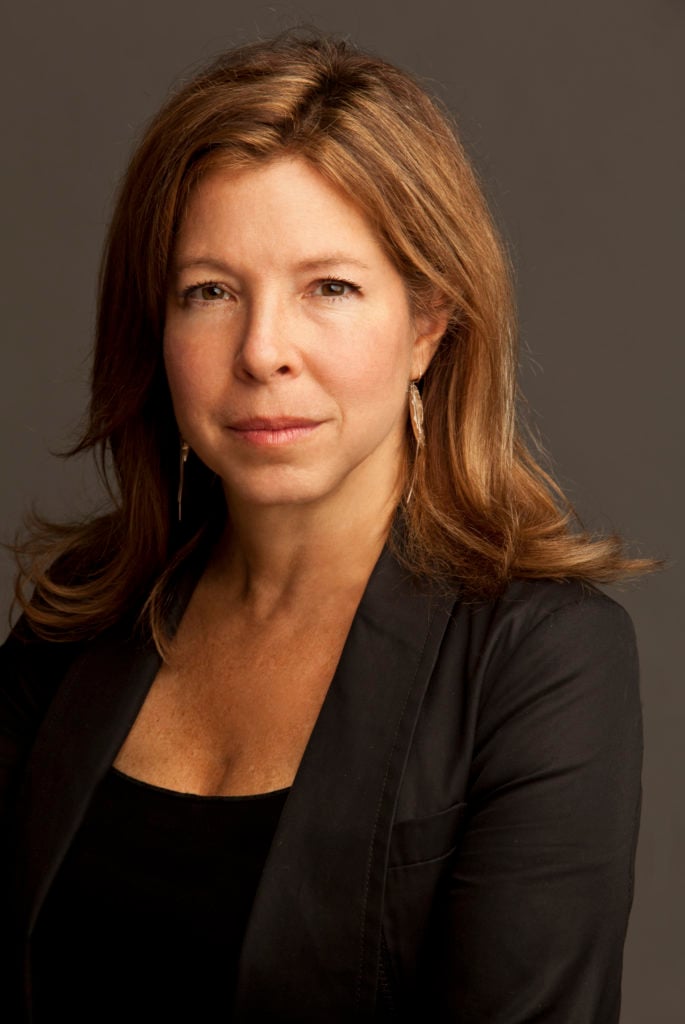
Brooklyn Museum director Anne Pasternak. Photo by Timothy Greenfield-Sanders, courtesy of the Brooklyn Museum.
When the Brooklyn Museum announced that it had hired a white curator of African art, Twitter began buzzing—and not with congratulations. In April, the activist group Decolonize This Place published an open letter urging the institution to address the unfolding “curatorial crisis.” The Brooklyn Museum’s director Anne Pasternak stood by its selection of Kristen Windmuller-Luna for the position, while curator Okwui Enwezor, who had troubles of his own at Munich’s Haus der Kunst, also voiced his support for his former student. “The criticism around her appointment can be described as arbitrary at best, and chilling at worst,” he said. In an interview with artnet News in December, Pasternak revisited the controversy for the first time since it erupted, noting that while she felt the protest was based on some fundamental misunderstandings and untruths, she also understood that “the ultimate, fundamental point was that there has not been enough diversity in art institutions, and that people’s histories have been either ignored or they’ve been wrongly framed or they’ve been spoken down to.”
This year will be remembered as the one when museum sponsorship became a minefield. In London, the Design Museum’s directors were put on the defensive when it emerged that the institution had hosted a party for arms dealers while presenting a show of politically engaged graphic art. Many of the artists and designers pulled their works in protest, and then organized an alternative exhibition supported by the likes of Jeremy Deller, Tania Bruguera, and the Guerrilla Girls. But that wasn’t the only institution to come under fire for its fundraising practices: The Natural History Museum in London faced accusations of accepting “blood money” when it went ahead with a party organized by the Saudi Embassy the week that journalist Jamal Khashoggi disappeared in the country’s consulate in Istanbul. Meanwhile, the Met and Brooklyn Museums decided not to accept funding tainted by its links to the Saudi Crown Prince, who is widely believed to have ordered the murder, but France and Florence’s Uffizi Gallery went ahead with their Saudi deals.
“We appreciate gifts, but free, unconditional, and without ulterior motives,” said a group of two-dozen Paris-based artists, museum workers, collectors, and politicians in an open letter responding to Jeff Koons’ offer of a giant sculpture to commemorate the 2015 terrorist attacks. Has a gift ever been so hard to give? In the years since Koons first offered to provide the hand-and-balloon-flower sculpture, Parisians raised a number of quibbles: the locale was unsuitable; the selection of Koons with no public consultation was inappropriate; the work was simply in bad taste; and it was too expensive. (Koons only gifted the idea, not the $4.3 million execution and installation costs.) Finally, in early October, a solution came into view: Koons and the French culture authorities agreed to plant the work on the lawn of the Petit Palais, the historic home of the City of Paris Museum of Fine Arts, which is near the Champs Élysées. They also pledged that the project would be financed by private money, not the French taxpayers. However, it still needs an official green light from French authorities. So the saga may not be over yet.
Kerry James Marshall made headlines for the record-setting $21.1 million sale of his work, Past Times, at Sotheby’s in May. But most coverage focused more on the painting’s high-profile buyer (Diddy) than its seller, the Chicago Metropolitan Pier and Exposition Authority, which had paid $25,000 for it in 1997. The success seemed to set off something of a troubling trend: Less than six months later, Chicago’s Public Library consigned Marshall’s painting, Knowledge and Wonder (1995), to Christie’s for its major fall contemporary art auction with a presale estimate of $10 million to $15 million. Within a week, outrage over the move, including from the Chicago-based artist himself, prompted a reversal of the decision. (It also sparked a broader discussion about the ethics of public institutions monetizing works they bought or commissioned from artists at comparatively low prices.) Mayor Rahm Emmanuel told the Chicago Tribune that he told the artist, a friend: “If you’re not happy, I don’t want to go forward.” Marshall was not placated, however. Even though he said the decision was the right one, he has vowed to never make a public artwork again.
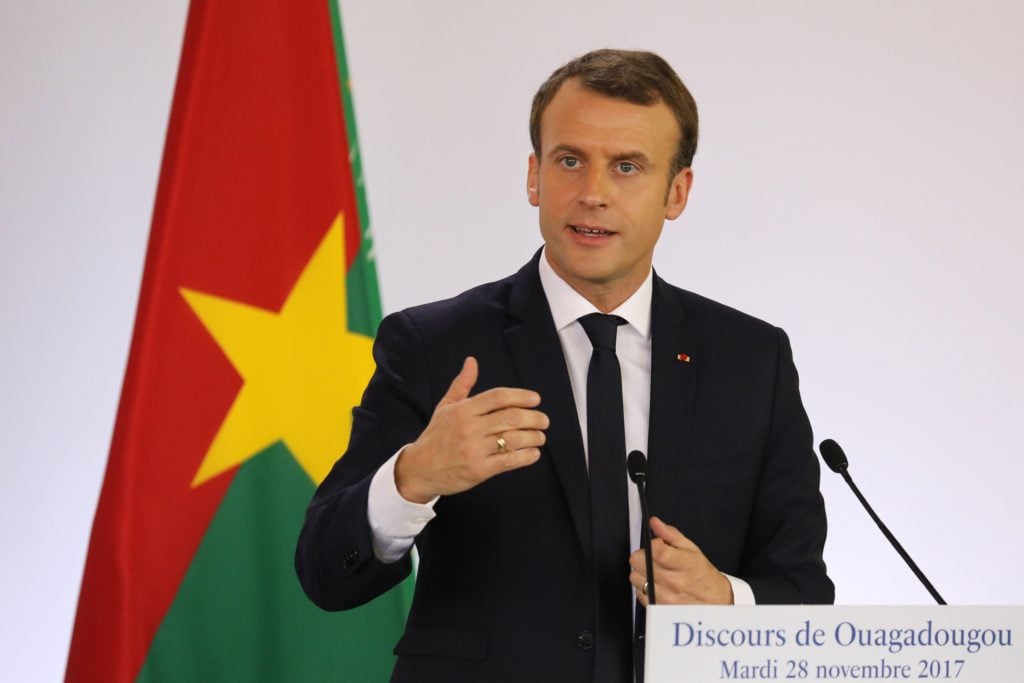
French President Emmanuel Macron speaks at the Ouagadougou University on November 28, 2017. Photo: Ludovic Marin/AFP/Getty Images.
French President Emmanuel Macron commissioned a report about what France ought to do with the art in its museums that was looted from Africa during the colonial era. The result was even more sweeping than anticipated: the authors recommended full and thorough restitution, the “final and unconditional return of heritage objects to the African continent.” The news sent shockwaves through Europe’s museums, which had previously entertained the idea of temporary loans, but little more. Meanwhile, ambitious museums are taking shape in Africa to house the stolen treasures: Nigeria is planning one to house the Benin bronzes, and in December, Senegal unveiled a vast Museum of Black Civilization. Designed by Chinese architects and built with Chinese money, it reflects the shifting cultural geopolitics of the continent. Some restitution, meanwhile, has already begun—but so has the blow-back from museum leaders who say France’s report goes too far. In 2019, all eyes will be on Berlin as the Humboldt Forum opens and Germany’s colonial treasures (and skeletons) emerge from storage.
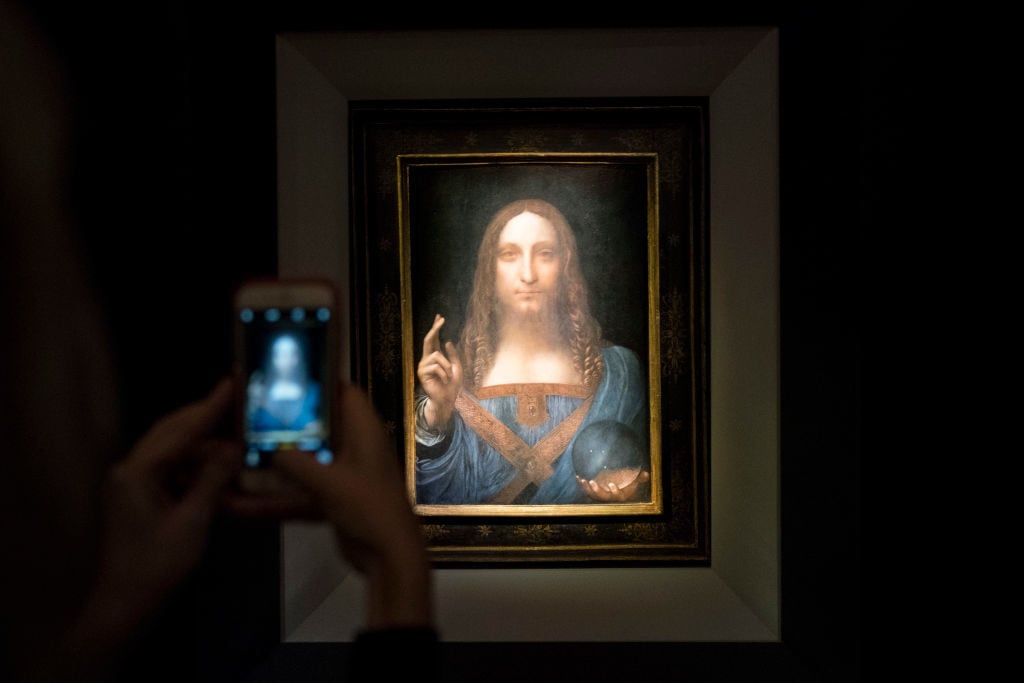
A visitor takes a photo of the painting Salvator Mundi by Leonardo da Vinci at Christie’s New York. (Drew Angerer/Getty Images)
Nearly a year after Leonardo da Vinci’s Salvator Mundi (1500), a portrait of Christ, smashed all previous auction records to sell for a jaw-dropping $450.3 million at Christie’s, no one knows where the painting actually is. The Louvre Abu Dhabi, which stepped forward as the proud new owner in the weeks following the sale—despite the fact that the picture was reportedly purchased by a Saudi prince—said in September that it had indefinitely delayed the unveiling of the painting and that more details would be forthcoming. Three months later, no further information has been released. Meanwhile, the rumor mill is rife with speculation about the condition and authenticity issues that may have prevented the work from going on view.
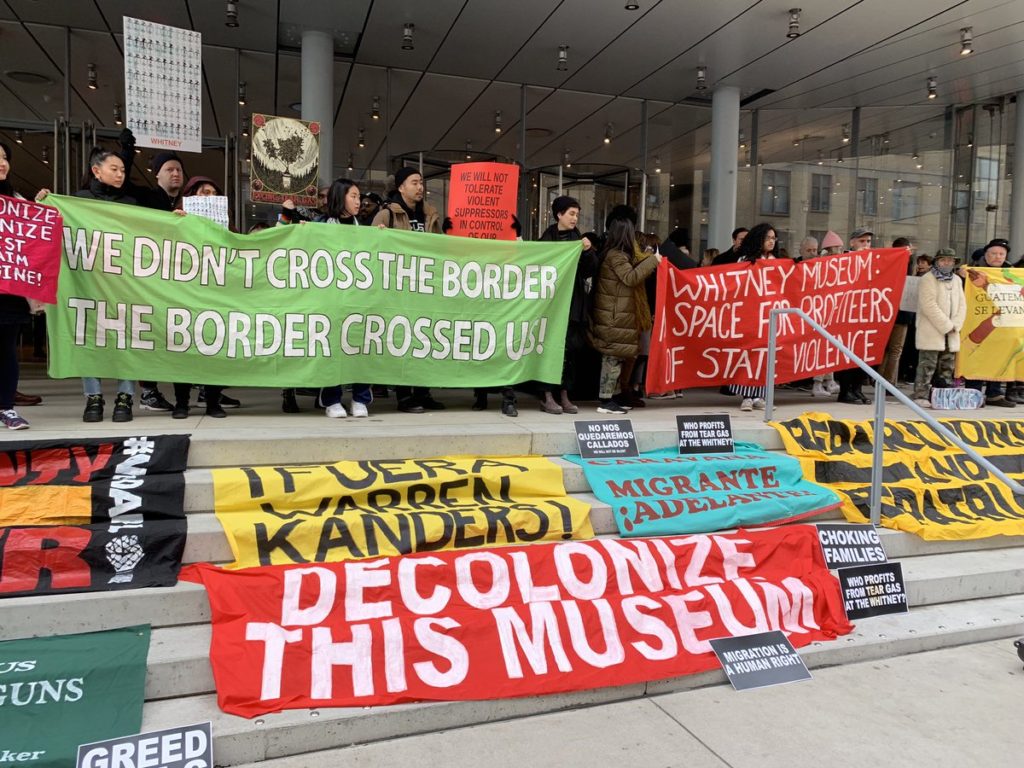
Decolonize This Place protests at the Whitney Museum of American Art. Photo courtesy of @nycDSAantiwar.
The sponsorship debate continued to rage right up until the end of the year. In December, the Whitney Museum came under fire for its board chairman, Warren B. Kanders, who owns the tear gas manufacturer Safariland. (The company supplied tear gas to US Customs and Border Protection officers, who used it on migrants at the San Diego-Tijuana border.) After Hyperallergic published an article pointing out Kanders’s connection to the brutality, around 100 Whitney staff members signed a letter in protest. In response, Whitney director Adam Weinberg stated that the museum respected the right to dissent as long as its art, staff, and visitors remained safe. However, he said, the Whitney “cannot right all the ills of an unjust world, nor is that its role.” In his own response, Kanders said: “I think it is clear that I am not the problem the authors of the letter seek to solve.” But these comments did little to quell dissent from activists from Decolonize This Place, who filled the museum’s lobby with smoke by burning sage as part of a public protest.